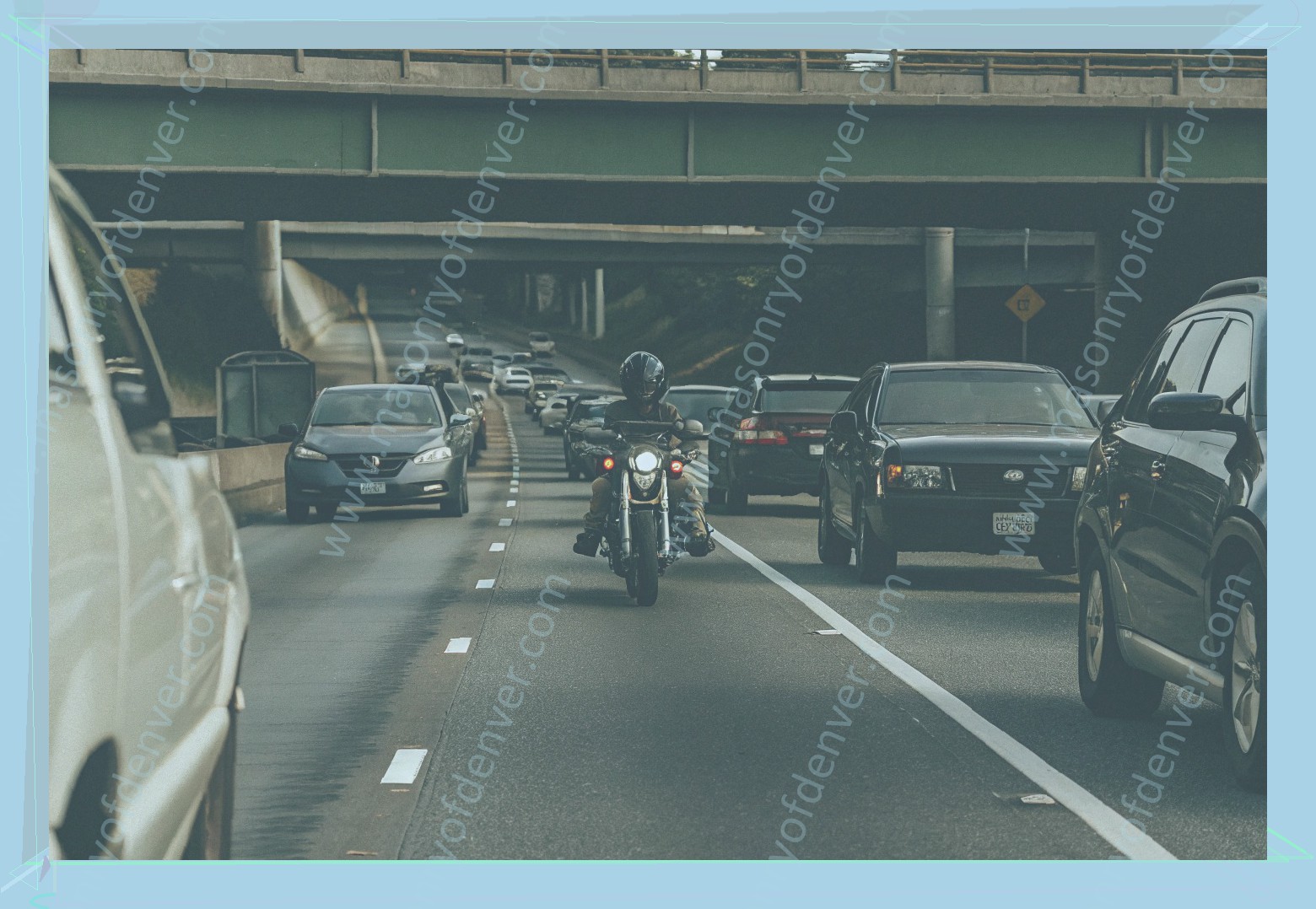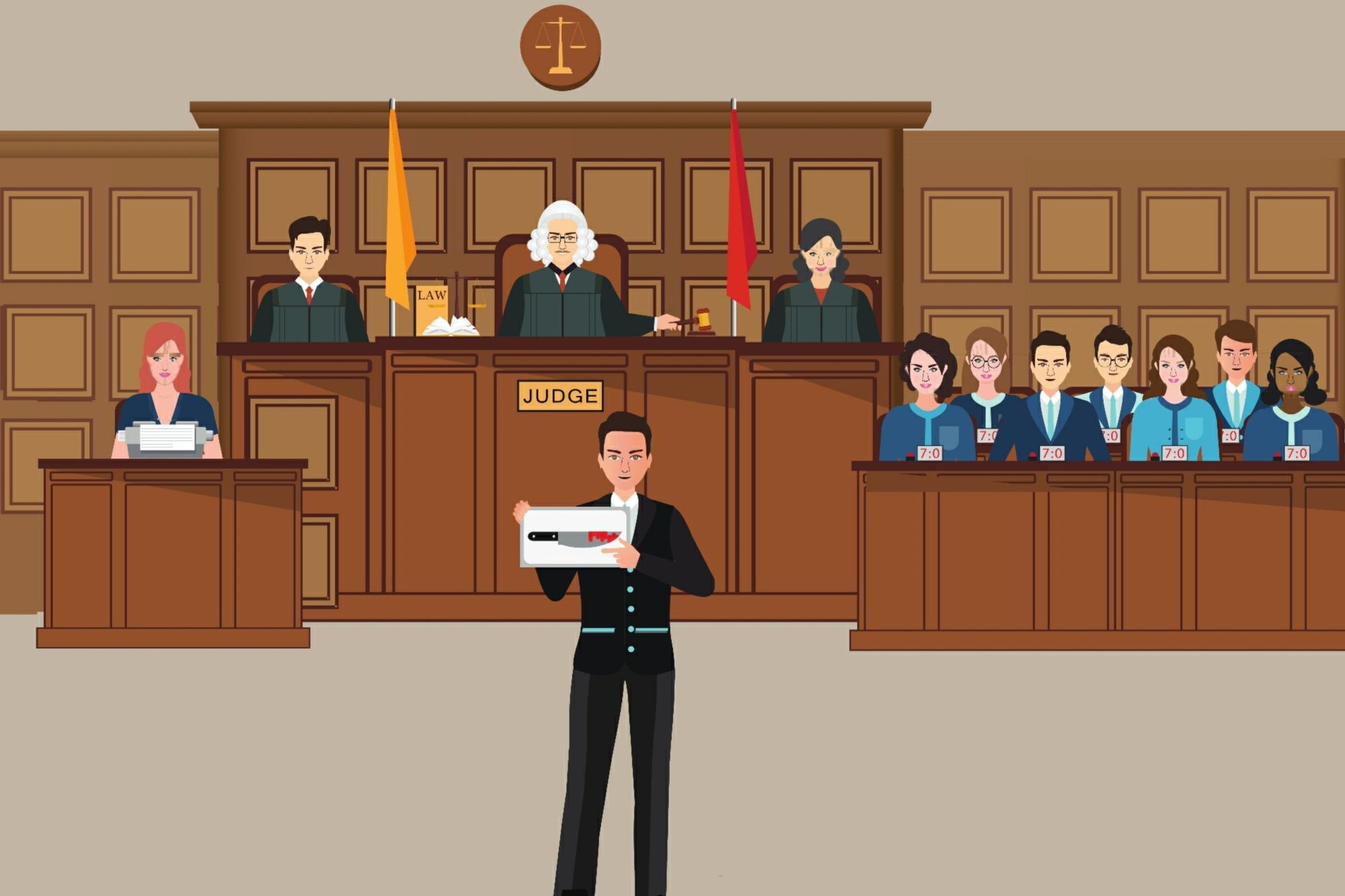Defining Lane Splitting
Lane splitting is what happens when a motorist on a motorcycle drives between lanes of traffic that are moving at a slow rate or are stopped. Lane splitting is most commonly seen on freeways. To the average driver sitting still on a freeway, it may look like the motorcyclist is trying to squeeze through where there is not enough room, but in reality, he or she is just doing what is allowed by law and to their own advantage, as noted above.
Let’s say, for example, that you are driving on I-285. Traffic is heavy but moving about 2 miles per hour. A motorcycle traveling between cars in the same situation is considered lane splitting. The motorcycle stays in the lane, behind another car that is going 2 miles per hour but moves side-to-side to bay the motorcycle room between lanes to move forward at this speed .
In another example, let’s say you are waiting for a red light to turn green. The driver in front of you is stopped. However, on a motorcycle, you can move between lanes that are stationary to safely advance your bike to a safer position ahead of vehicles waiting to proceed.
Lane splitting is common in countries such as the Philippines, China, Taiwan, France, India, Korea, Thailand and Mexico where motorcycles are more common, even daily drivers. However, it’s not legal in the U.S. and particularly in Georgia. Not only can you be pulled over for lane splitting, getting into an accident while you are lane splitting and blamed for the accident as an aggravating factor could result from it.
Does Georgia Law Allow Lane Splitting?
Georgia is one of the states that has lane splitting explicitly prohibited by statute, according to the DMV website. Therefore, as of the time of this posting, lane splitting is not permitted at all on any public road in Georgia. Official Georgia law states that no vehicle shall be driven between lanes of traffic…Public Act 1166, § 6. There are penalties for lane splitting including a maximum $250 fine and/or a suspension of up to 3 months. The suspension is mandatory for a 3rd or subsequent offense. Motorcyclists can incur fines from police officers for lane splitting or vehicles can lose their tags and be towed. Remember to educate yourself about the laws in your state and always consult with an experienced motorcycle accident lawyer before trying new things out there on the road.
How Does Lane Splitting Compare with Other States?
When compared to the lane splitting practices of some other states, Georgia falls in the middle of the road, so to speak. Additionally, it is important to consider that traffic and safety laws are not truly uniform across the nation, although in many instances there are overarching standards and legal precedents. For example, Maryland, like Georgia, prohibits lane splitting. However, in California, lane splitting or "white lining" is expressly permitted under certain conditions as outlined in AB-51, which encourages motorcyclists to maintain a distance, where possible, of at least 3 feet between vehicles. If the motorcyclist is unable to maintain this distance, they are warned to travel at a safe speed no greater than 30 miles per hour, and no more than 10 mph if traveling 30 mph or above, which is also current law for motorcycles.
In South Carolina, lane splitting is illegal; however, Lane Sharing is permitted under certain conditions. The driver may share a lane with another motorcycle if there is space to do so, and while the operator is not allowed to operate the vehicle between lanes of traffic or drive on the line between two lanes, lane splitting is still an option when traffic is moving at 30 mph or less and road conditions permit such movement.
On the opposite end of the spectrum, Florida traffic law categorically prohibits lane splitting, as well as not allowing motorcyclists to make any attempts to share a lane of traffic.
The fact that many traffic laws vary from state to state increases the importance of knowing the local laws where you live, as well as those in the states through which you travel.
Concerns about Safety Involving Lane Splitting
Presently, there is no legal precedent or statutory law concerning lane splitting in Georgia. Though the practice of moving quickly through traffic to the front of a line of cars isn’t technically illegal according to the letter of the law, it is not expressly permitted, either. In addition, lane splitting can be a risky practice.
The primary safety concern related to lane splitting is that your motorcycle can abruptly become caught in the right-hand blind spot of a driver attempting to merge or make a right turn. Of all the potential risks, this is the most concerning.
The traffic laws in Georgia state that all passing must be performed with due care. Motorcyclists who attempt to pass often do so in a hasty manner, and speed is a factor in most cases. One way to mitigate this risk is to lane filter (move between lanes and stopped vehicles rather than riding between moving vehicles).
There are potential benefits to lane splitting. For example , motorcyclists may be able to positively impact congestion, reduce accidents, and increase personal safety through their actions. Motorcyclists who encounter drivers who believe they are sharing the road should take the opportunity to discuss road etiquette, safe riding practices, and other topics. This isn’t possible in every case, as many motorists need to be on their way. But any chance to spread awareness should not be missed.
It is important to avoid speeding, sudden lane changes, and other erratic behavior when lane splitting. If lane splitting becomes a regular practice, motorcyclists should learn to ride with it in mind, so as to avoid making dangerous movements. Even experienced motorcyclists must actively make decisions concerning lane splitting to prevent accidents.
The lack of legal clarity in Georgia surrounding lane splitting presents a challenge for riders and law enforcement. In the event that an accident involving a motorcyclist does occur, determining fault is not always possible.
Debates about Lane Splitting and Public Opinion
Public opinion and debate on the topic of lane splitting in Georgia – whether to legalize or ban the practice – has been mixed. On one hand, motorcycle groups and individual riders have advocated for the legalization of lane splitting, citing the potential benefits for reduced traffic congestion and the improvement in safety for motorcyclists. Proponents point to studies that suggest the practice could reduce the likelihood of rear-end collisions at traffic signals.
The American Motorcyclist Association (AMA), for instance, has long supported laws to permit lane splitting in a safe manner. They argue that other states with lane splitting laws have seen positive effects, such as a reduction in motorcycle accidents.
On the other hand, the Georgia House and Senate have both been presented with bills that would have made lane splitting illegal, with various legislators expressing concerns about the potential for increased accidents and injuries as a result of highway traffic. For example, many state legislators and law enforcement officials argue that lane splitting is a distraction to drivers, who may not be paying attention to motorcyclists. This, they argue, can lead to increased accidents on the road.
These concerns have been echoed by motorcycle enthusiasts in the state who worry about the greater risk posed to riders on public roads. Opponents of lane splitting say that it is illegal for a reason, and should remain so. They argue that lane splitting laws would create more problems than they would solve, suggesting that the practice presents more risk for everyone on the road.
Ultimately, public opinion on the issue has been complex. Given the mixed reception of the lane splitting bills in the state legislature, it seems that in Georgia, public opinion remains divided between those who see the value in lane splitting and those who do not.
Prospects for Legislative Changes
With attitudes towards the lane splitting issue becoming more positive in some law enforcement and legislatorial circles, it is possible that there may be a willingness to re-examine the law. As the number of motorcyclists continues to increase, especially as the economy continues to grow, an increasing body of evidence suggests that some form of lane splitting may be required not only for safety, but also for traffic management of the new influx of motorcycles.
Some lobbying groups are starting to push for more legal and safe lanes splitting regulations in some states , including California and Georgia. California is considered to be a country wide influence in many issues, and the lane splitting issue will likely bleed into other jurisdictions as well.
There is already at least one bill currently on the docket in GA that would allow motorcycles "operated under respect of a one car length distance" from other vehicles or trailers. The language of the law would arguably allow motorcycles to pass quickly between other vehicles. Given the high traffic on the interstates in Atlanta, that might just make sense.
Until that time, motorcyclists are advised to remain in full compliance with the current laws.



